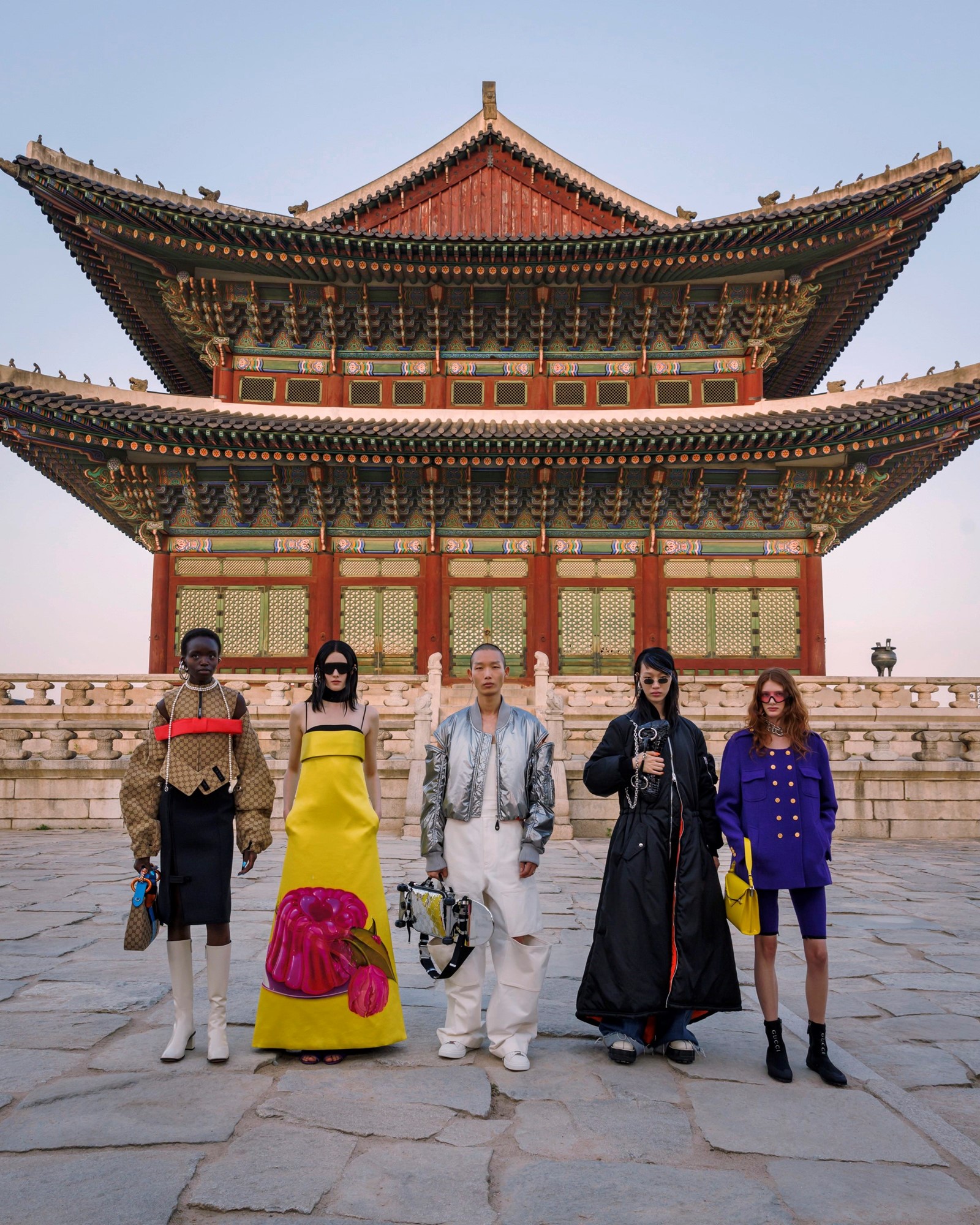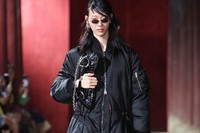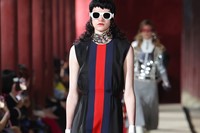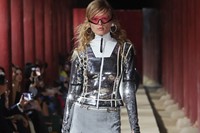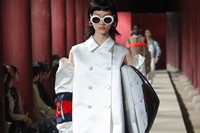The Gyeongbokgung Palace in the centre of Seoul dates back to the country’s 14th century Joseon dynasty – well, kind of. The palace itself was destroyed and defaced during 19th century wars and South Korea’s 35 year occupation by Japan between 1910 and 1945, and has been rebuilt since the 1990s, its heritage painstakingly restored, revitalised for a new generation. This was the first fashion show ever staged within its confines, the courtyard glittering with lights as the models strode through surrounding colonnades, lights strobing, as if the past and present were colliding in the future.
The symbolism of that kind of space – and all that imagery – is perfect when tied to a fashion house like Gucci, which is, of course, currently doubling down on heritage and history in an interim period before new creative director Sabato De Sarno debuts his vision for the house (he is in the building; his first show will be in September). But it was also a celebration and a bold statement of the importance of South Korea as a market for luxury (Gucci has been here since 1998) and its cultural impact across the world (K-Pop stars and Squid Game actors were in attendance, amply amplifying that point). Which is why you saw Gucci clothes that collided the brand’s own history with that of its adopted, one-night-only locale, in echoes to contemporary Seoulite style as well as traditional costumes – the flat satin bows high on the chest on a number of looks subtly nodded to the bows closing Korean hanbok. Those juxtaposed old and new in the same manner that Seoul’s glittering skyscrapers towered in the background behind the palace’s traditional architecture – which, incidentally, Gucci is also financially supporting the conservation and restoration of. That’s the beneficial quid pro quo, often overlooked, of these kinds of events – giving heritage sites a boost of publicity, allowing fashion houses access to the inaccessible, and of course enabling history to carry on living. It’s win-win.
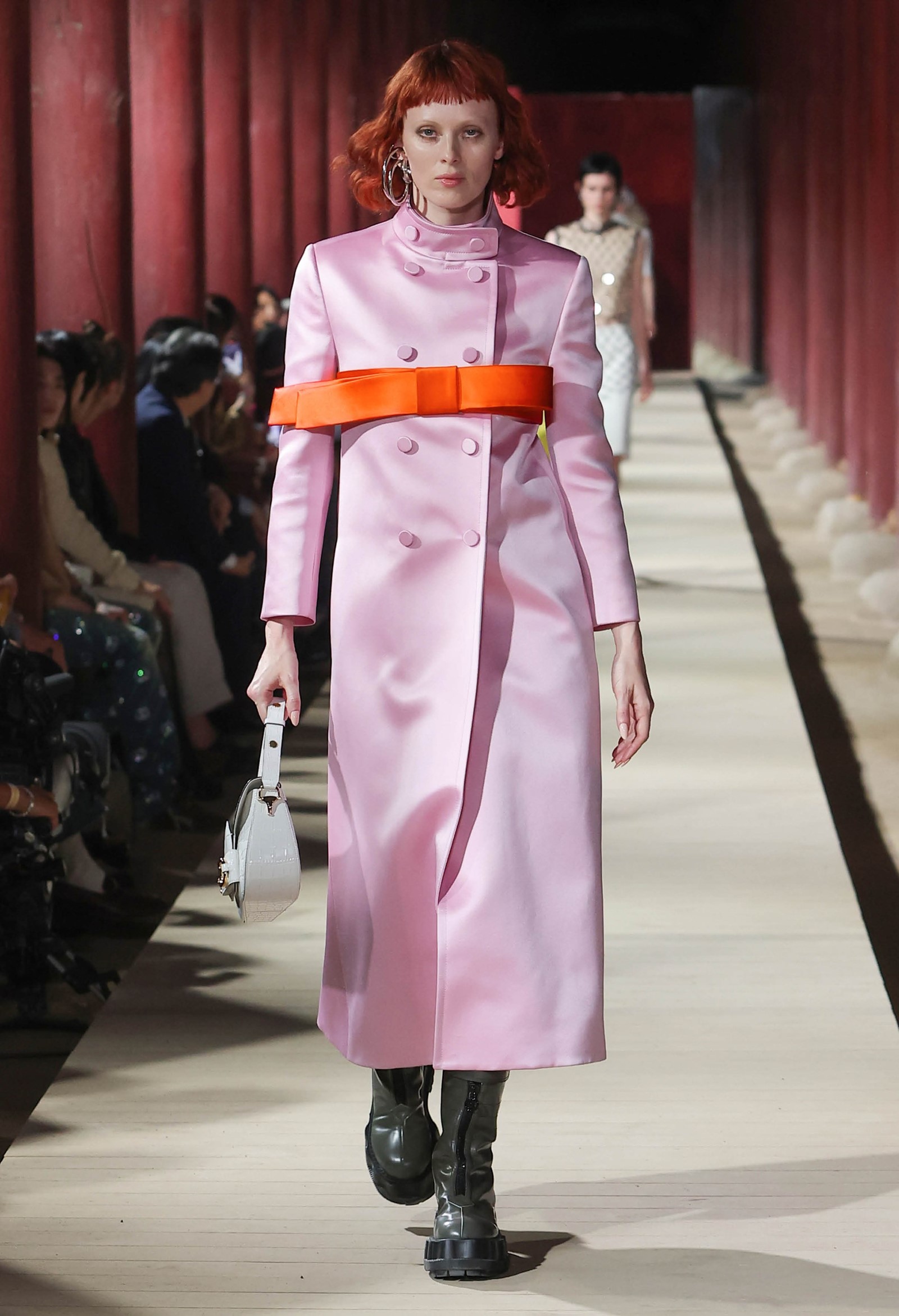
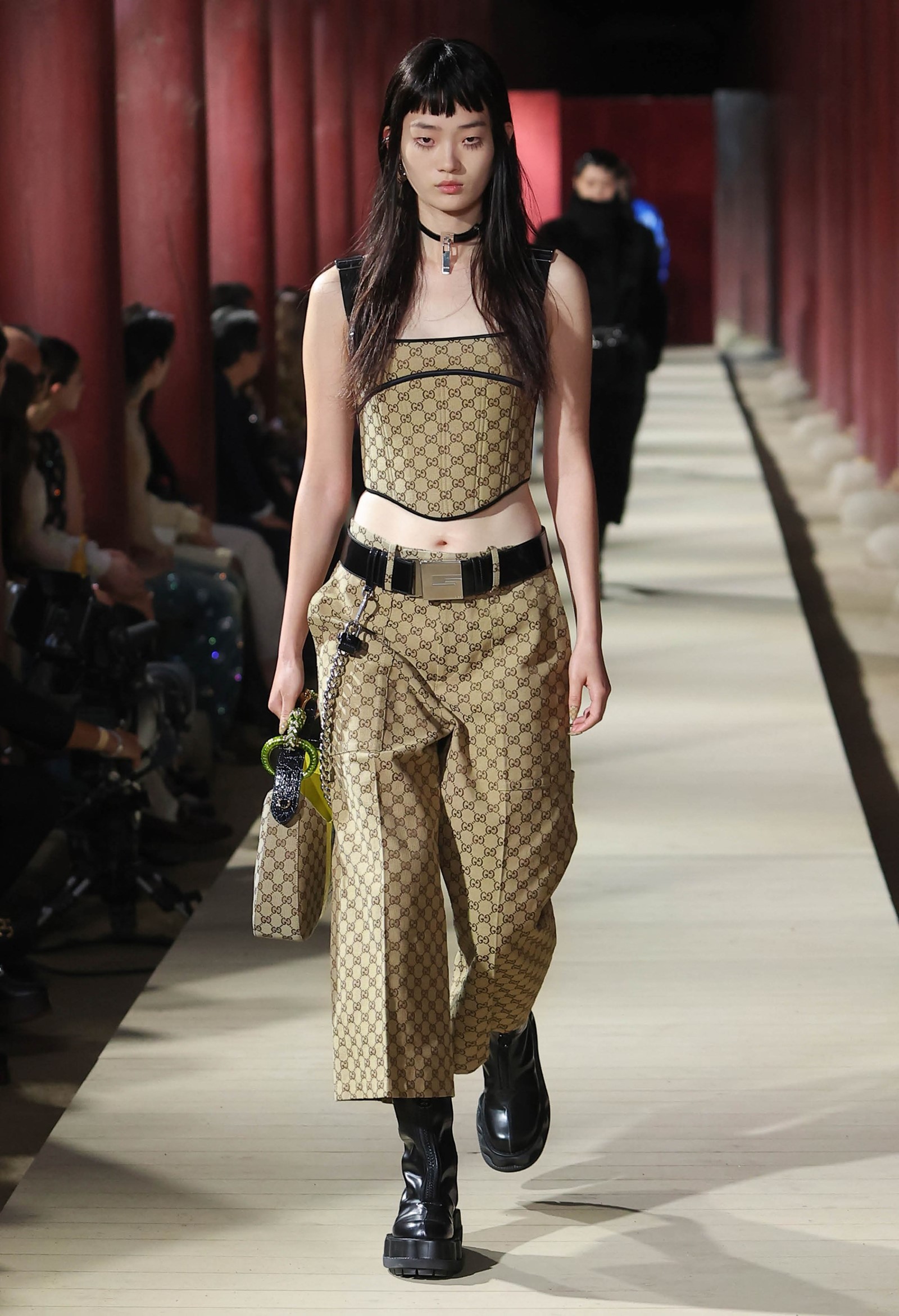
The echoes also extended to Gucci’s own history, in designs that ran the gamut from Horsebit buckles and triband logos from the early years, to nods to nineties and even early noughties designs. Remember when Tom Ford created Gucci logoed snorkels and flippers? The design team at the house do – although they didn’t appear, wetsuit-inspired styles and surfboards emblazoned with the brand’s logo in glossy black seemed contemporary reimaginings of that throwback. They also nodded to the windsurfers and skiers of the Han River. Silhouettes were slicker and more body-conscious, colours harder. There were also touches of the bourgeoisie via tweed skirt suits, silk blouses and kitten heels, contrasting with styles yanked from sportswear, a literal representation of the clashing of culture evident in Seoul, young and old, casual and formal, backward-glancing yet forwards-thinking. It was a clash that felt quintessentially Gucci.
At least, the Gucci of right now. This collection was actually a timely reiteration of the multitude of identities Gucci has sprinted through over 102 years – the brand has outfitted Jackie Kennedy with propriety, Madonna with sexuality, and Elton John with a degree of insanity, to showcase just a few of its wildly divergent attitudes over the years. So the collection was peppered with reminders of the house’s history, both its recent past and foundational emblems and symbols. While it was far from a clean slate – this collection was loaded with emphatic pieces, giddy with logos and colours and shapes – it still served as a pause, a moment to regroup and recollect, before Gucci moves into a new future. What better place to do that than in an ancient palace, when you're welcoming your next design dynasty?
